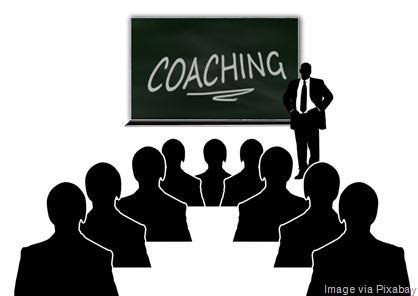 Business productivity is all about having the right people, even though I’m bombarded daily with online tools and mobile apps that promise to solve every problem with automation and data. In reality, business success and satisfaction is about doing the right things at the right time, which requires leadership and coaching. But coaching doesn’t always work the way you expect.
Business productivity is all about having the right people, even though I’m bombarded daily with online tools and mobile apps that promise to solve every problem with automation and data. In reality, business success and satisfaction is about doing the right things at the right time, which requires leadership and coaching. But coaching doesn’t always work the way you expect.
In fact, I’m a strong proponent of coaching and mentoring in the workplace, but I recognize that these efforts can only go so far in eliminating your human resources problems, and increasing team morale and performance. Some managers work too hard on fixing the weaknesses of the people they have through coaching, rather than enhancing the strengths of the right people.
Most companies still operate around a set of related coaching myths I saw described well in a new book, “The Power of People Skills,” by Trevor Throness. Trevor is a veteran coach who has helped hundreds of entrepreneurs, organizations, and business families across the country. He knows well when it works, and when it doesn’t.
For example, he says that he has never yet worked with someone who succeeded because they had a well-honed set of strong weaknesses. I have paraphrased here his summary of the most common coaching myths:
-
Coaching is to help people manage their weaknesses. Everyone has weaknesses, including your star employees. The focus of coaching should be to capitalize and extend their strengths, not manage their weaknesses. Coaching is helping a person increase self-awareness and adjust their role to take better advantage of their greatest strengths.
-
People’s basic weaknesses will change if they’re coached. In reality, if you like the basic package of who your employee is now, know that they will get better with coaching and training. If you don’t like today’s package, all your effort, time, and money will not turn them into a different person. People can change themselves, but you can’t change them.
-
Coaching will fix the behavior of stubborn, poor performers. A good test of your poor performer is to mention the possibility of receiving coaching. If their ears perk up, and they express interest, maybe there’s hope. If you see no enthusiasm, don’t waste your time with elaborate, ongoing coaching efforts that go beyond the basics.
-
Tough coaching conversations damage relationships. Ironically, more often than not, just the reverse is true, if the conversation is direct and without undue emotion. Superstar leaders are able to have difficult conversations without making enemies. They earn trust and loyalty because they’re willing to tackle these issues, without being judgmental.
-
Successful coaching suggests making sweeping life changes. Typically, sweeping changes are short-lived. Real change happens more gradually and takes more enduring effort. A successful coaching engagement is more like a marathon that a sprint. All it takes is someone committed to getting a little bit better each and to finishing the race.
-
All age generations can be coached the same way. If you use the same approach with every age group, you will miss the mark for all. Members of different generations tend to view the workplace differently. The best leaders and companies adapt the role and guidance to the people they have, rather than expect people to adapt to assigned roles.
-
The person with the best qualifications wins every time. Skill is needed, but if you have to weigh skill against culture fit, choose fit every time. Hire for fit; train for skill. People who are bright, people-savvy, and eager to learn and grow are always a good fit. Look for natural-born leaders with drive, vision, purpose, and a focus on the customer.
-
Personal life changes need not be allowed to impact work. At the end of the day, your personal and professional lives are the same life. If your work life is going badly, your loved ones feel it at home, and vice versa. The best leaders don’t dodge personal issues, but add coaching to minimize the work impact, and adapt roles where possible.
Effective coaching starts with sitting with each of your team members, helping them identify their greatest strengths, and brainstorming with them about how they can capitalize on strengths. Coaching is not pouring time into people who are not interested in growing, not pleasing customers, or not moving ahead. Focus on people coaching, and the tools will do the rest.

